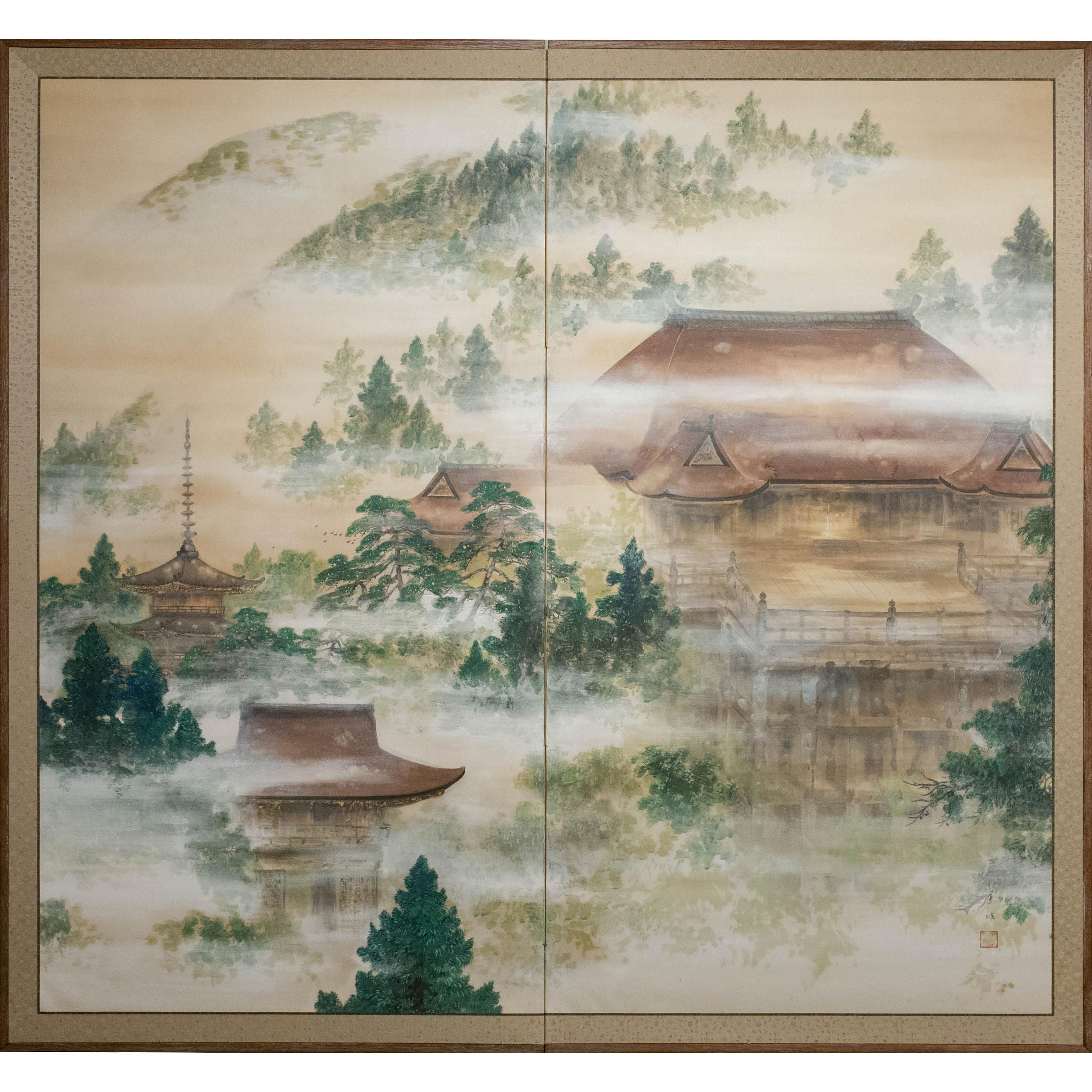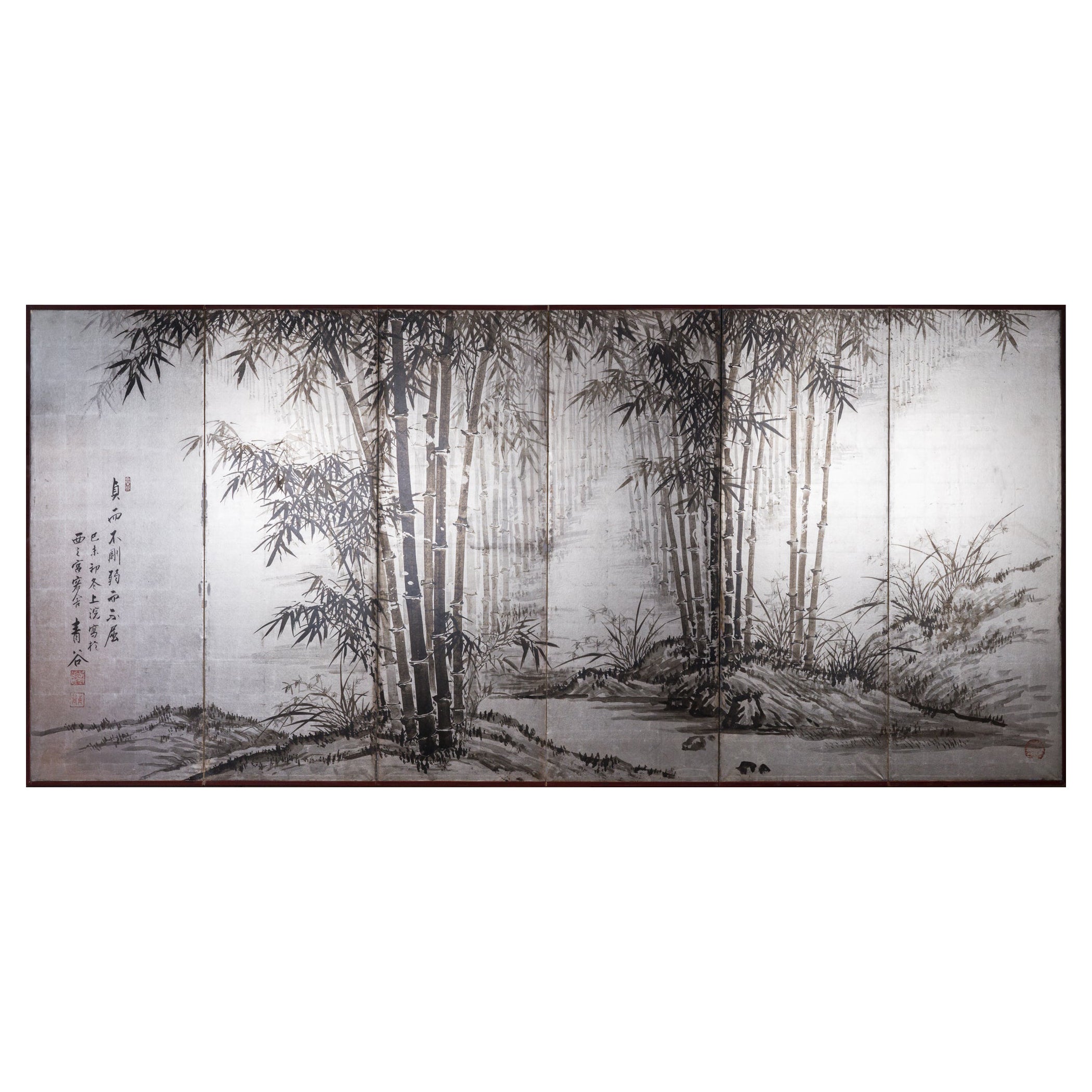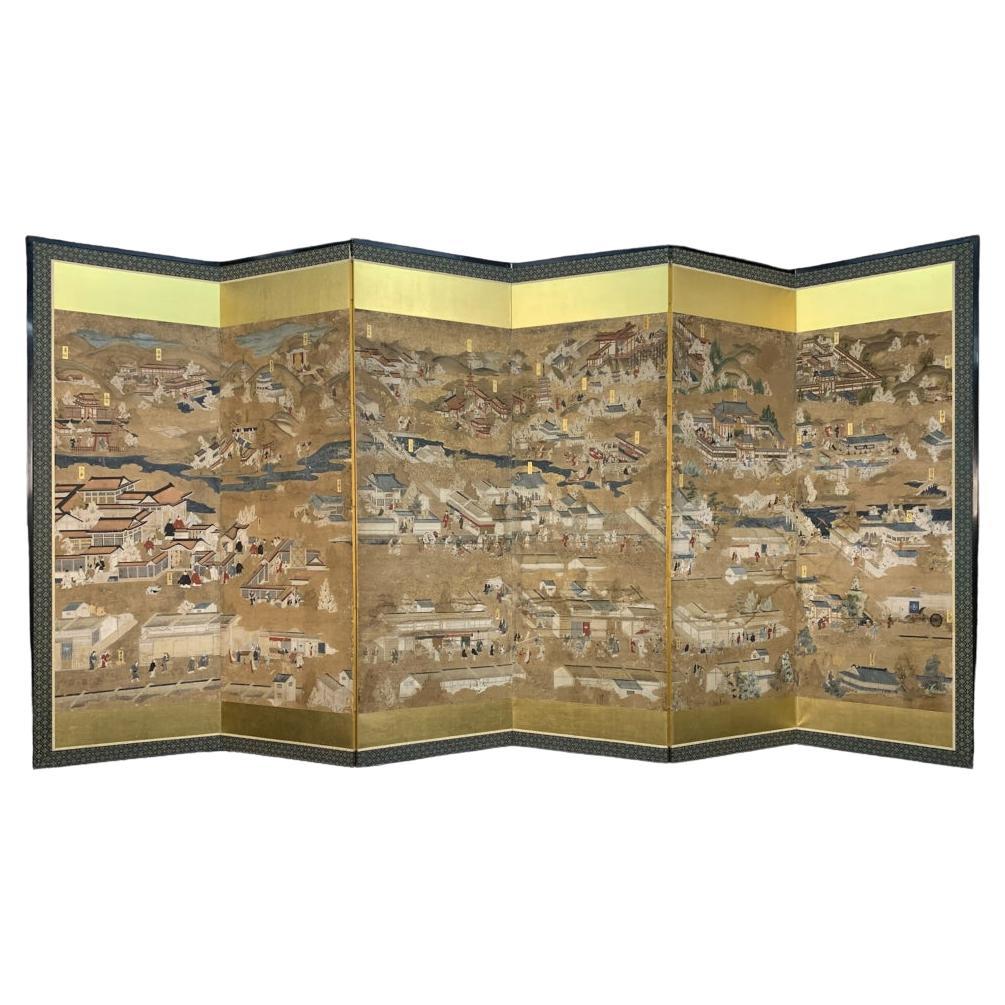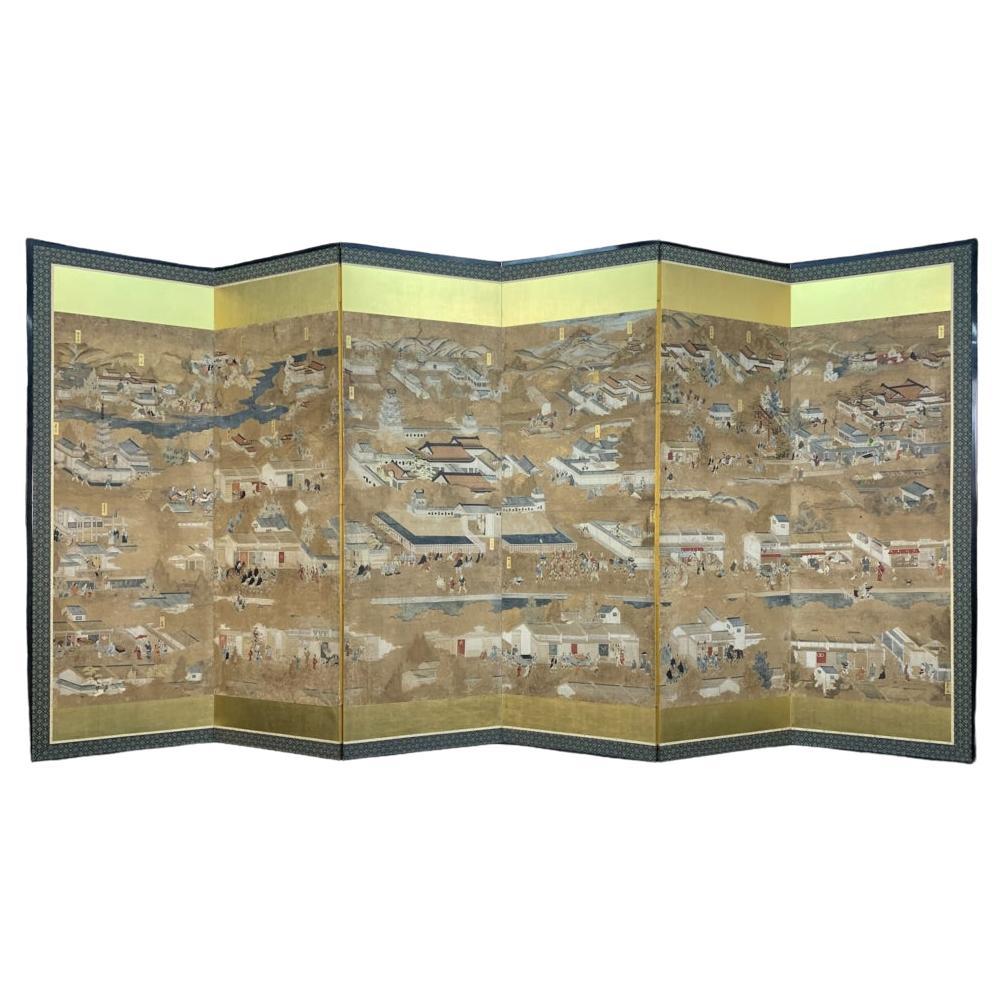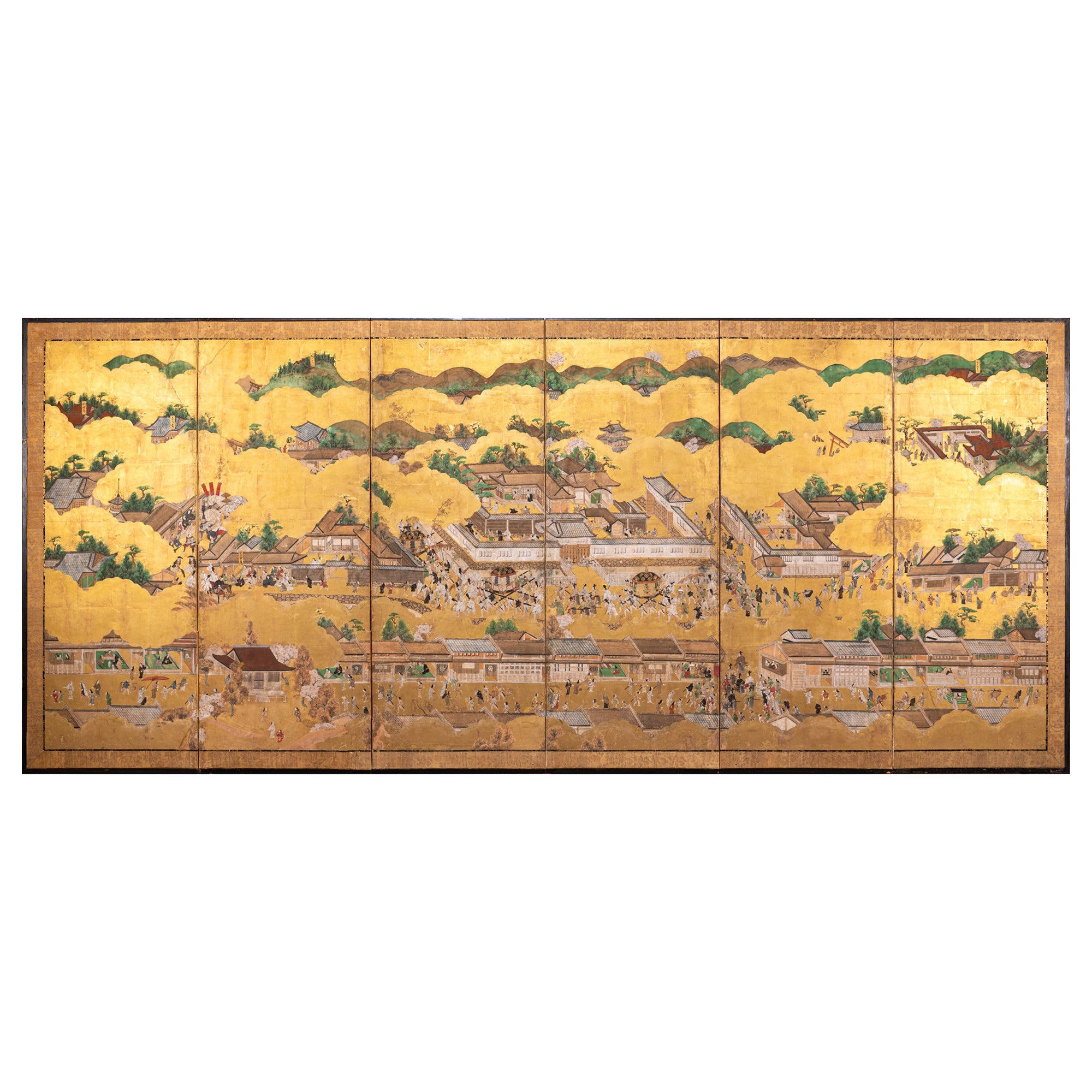Items Similar to Japanese Kyoto Embroidered Screen
Video Loading
Want more images or videos?
Request additional images or videos from the seller
1 of 15
Japanese Kyoto Embroidered Screen
About the Item
This is a finely stitched Kyoto embroidery screen that dates to the Meiji Era (1868 - 1912). Kyoto has been celebrated for its skilled artistic embroidery since the early 8th century.
In the Meiji Era Kyoto embroideries became increasingly desirable due the the Japonisme craze of the second half of the century. Kyoto embroideries were acquired by the major households, palaces and museums. This example has survived in very good condition for over 100 years. Silk is a fragile material and it is apparent that this screen was treated with respect. Due to the design of screen, with all unnecessary elements eliminated, the screen could be placed in a traditional or period designed room as well as in a modern setting.
****Please contact us for competitive shipping quotes to the East Coast.
- Dimensions:Height: 112 in (284.48 cm)Width: 67.25 in (170.82 cm)Depth: 1 in (2.54 cm)
- Style:Japonisme (Of the Period)
- Materials and Techniques:
- Place of Origin:
- Period:
- Date of Manufacture:c. 1880-1910
- Condition:Repaired: The body of the embroidery remains intact with a few minor blemishes; the silk brocade surround has been repaired in a couple of areas. Wear consistent with age and use. Considering the age and fragility of the silk, this screen is in overall very good condition.
- Seller Location:Pasadena, CA
- Reference Number:1stDibs: LU2519336808512
About the Seller
5.0
Gold Seller
These expertly vetted sellers are highly rated and consistently exceed customer expectations.
Established in 1993
1stDibs seller since 2017
224 sales on 1stDibs
Typical response time: <1 hour
- ShippingRetrieving quote...Ships From: Pasadena, CA
- Return PolicyA return for this item may be initiated within 2 days of delivery.
More From This SellerView All
- Japan Scroll Painting, Meiji PeriodLocated in Pasadena, CAThis is a wonderful example of a Meiji Period screen painting of Japanese Tanuki or racoon dogs in a landscape. The Tanuki is considered to be a mythical creature Japanese culture. T...Category
Antique Late 19th Century Japanese Meiji Paintings and Screens
MaterialsFabric, Paint
- Japanese Calligraphy BoxLocated in Pasadena, CAThis is a very elegant and simplistic Japanese lacquered calligraphy box that dates to the mid-20th century. The minimal refined designed box includes the brush and other required wr...Category
Mid-20th Century Japanese Japonisme Scholar's Objects
MaterialsWood, Lacquer
- Japanese Okimo of Standing RabbitLocated in Pasadena, CAThis is an impressive Okimo of a rabbit in a resting position. The bronze is very well cast in the form of a realistic rabbit. The bronze is signed on the bottom of one foot, as shown in photo. It is thought that having a rabbit in the house would bring good luck; meaning: we all need one! This guy would make the perfect desk accessory or book shelf eye-catcher. ***In Japanese culture rabbits are one of the signs of the Japanese zodiac. They are considered lucky as the Japanese kanji...Category
Mid-20th Century Japanese Japonisme Metalwork
MaterialsBronze
- Japanese Lacquer Hokai Box, 19th CenturyLocated in Pasadena, CAThis is a good example of a traditional Japanese Hokai shell storage box for the Kai-awase game. This box is well-detailed in chased brass appliques and makie. The box is in overall ...Category
Antique Late 19th Century Japanese Japonisme Lacquer
MaterialsWood, Lacquer
- Japanese Imari Dinner Plates, Set of 10Located in Pasadena, CAThis is a very good set of 10 Japanese Imari hand painted dinner plates that date to the Meiji period. All 10 plates are in very good original condition, showing only hints of use. T...Category
Antique 1890s Japanese Japonisme Dinner Plates
MaterialsPorcelain
- Japanese ObiLocated in Pasadena, CASuperb example of a c. 1970s Obi. The obi is beautifully woven with multi-colored florals reserves and interlaced cherry blossoms. The reserves are delineated by woven metallic silve...Category
Late 20th Century Japanese Other Textiles
MaterialsSilk
You May Also Like
- Japanese Six Panel Screen Bamboo Forest in KyotoLocated in Hudson, NYInk painting of bamboo on nicely patinated silver leaf. Dated 1919, Signature reads: Seikoku.Category
Early 20th Century Japanese Paintings and Screens
MaterialsPaper
- Japanese Two-Panel Screen "Spring Mist in Kyoto"Located in Hudson, NYKyoto landscape featuring Kyomizu Shrine in all its glory in the Higashiyama Hills. Artist signature and seal read: Asami Kojo Mineral pigments on mu...Category
Vintage 1950s Japanese Paintings and Screens
MaterialsSilk, Paper
- Edo Period Kyoto Screen (2/2)Located in Fukuoka, JPEdo Period Kyoto Screen Period: Edo period Size: 343 x 176 cm (134.6 x 69 inches) SKU: RJ69/2 This stunning Edo period screen depicts typical scenes of...Category
Antique 18th Century Japanese Edo Paintings and Screens
MaterialsSilk, Wood, Paper
- Edo Period Kyoto ScreenLocated in Fukuoka, JPEdo Period Kyoto Screen Period: Edo period Size: 343 x 176 cm (134.6 x 69 inches) SKU: RJ69 This stunning Edo period screen depicts typical scenes of d...Category
Antique 18th Century Japanese Edo Paintings and Screens
MaterialsSilk, Wood, Paper
- Circa 1700 Japanese Screen Pair, Cranes & Pines, Kyoto Kano SchoolLocated in Kyoto, JPPines and Cranes Anonymous. Kyoto Kano School. Late 17th/early 18th centuries, circa 1700. Pair of six-panel Japanese folding screens. Ink, gofun, pigment and gold leaf on paper. This bold composition presents two pine trees extending to the left and right across a gold leaf background. One tree is silhouetted against a green ground, golden clouds obscuring its true size, the other stretches across a stylized waterway. The pines are paired with Manchurian cranes with red crests and snow white plumage. Both have been highly auspicious motifs in East Asia since Chinese antiquity. Here the artist utilized fluid and instinctive ink brushstrokes to define the trunk, branches and tail feathers, in strong contrast to the precision and sharp angularity of the crane’s legs and beaks. The adoption of this vast metallic painting support required an unerring sense of design and composition, so that the negative space surrounding motifs could imply context for the otherwise floating pictorial elements. The brushwork detailing the trunks of the pines, the exaggerated dimensions of the pine trees and the strength and dynamism of the composition are all reminiscent of Kano Eitoku...Category
Antique Late 17th Century Japanese Edo Paintings and Screens
MaterialsGold Leaf
- Japanese Six Panel Screen: Scenes in and Around Kyoto, 'Rakuchu Rakugai-Zu'Located in Hudson, NYThe left two panels is the intersection of the Tokaido (an important and historical road that connects Kyoto with Tokyo) at Sanjo (Sanjo translates to "Third Street" and is the main ...Category
Antique 18th Century Japanese Paintings and Screens
MaterialsGold Leaf
Recently Viewed
View AllMore Ways To Browse
Hand Painted Silk Fan
The Sparrows Of The Peony Tree
Vintage Black Japanese Shell Pictures
Framed Hand Painted Silk Screens
Japanese Coromandel Screen
Rimpa Screen Six
Heron Chinese Panel
Koi Fish Silk Painted Screens
Vintage Silk Painting Geisha
Japanese 4 Panels Screens White Flying Cranes
Rajhastani On Sale
Southeast Asian Floor Screen
Tall Antique Chinese Window Screen
Yoshizawa Setsuan
Zhao Shao Ang
4 Pole Bronze Light
Antique Thankas
Chinese Round Black Lacquer Screen Room Divider
